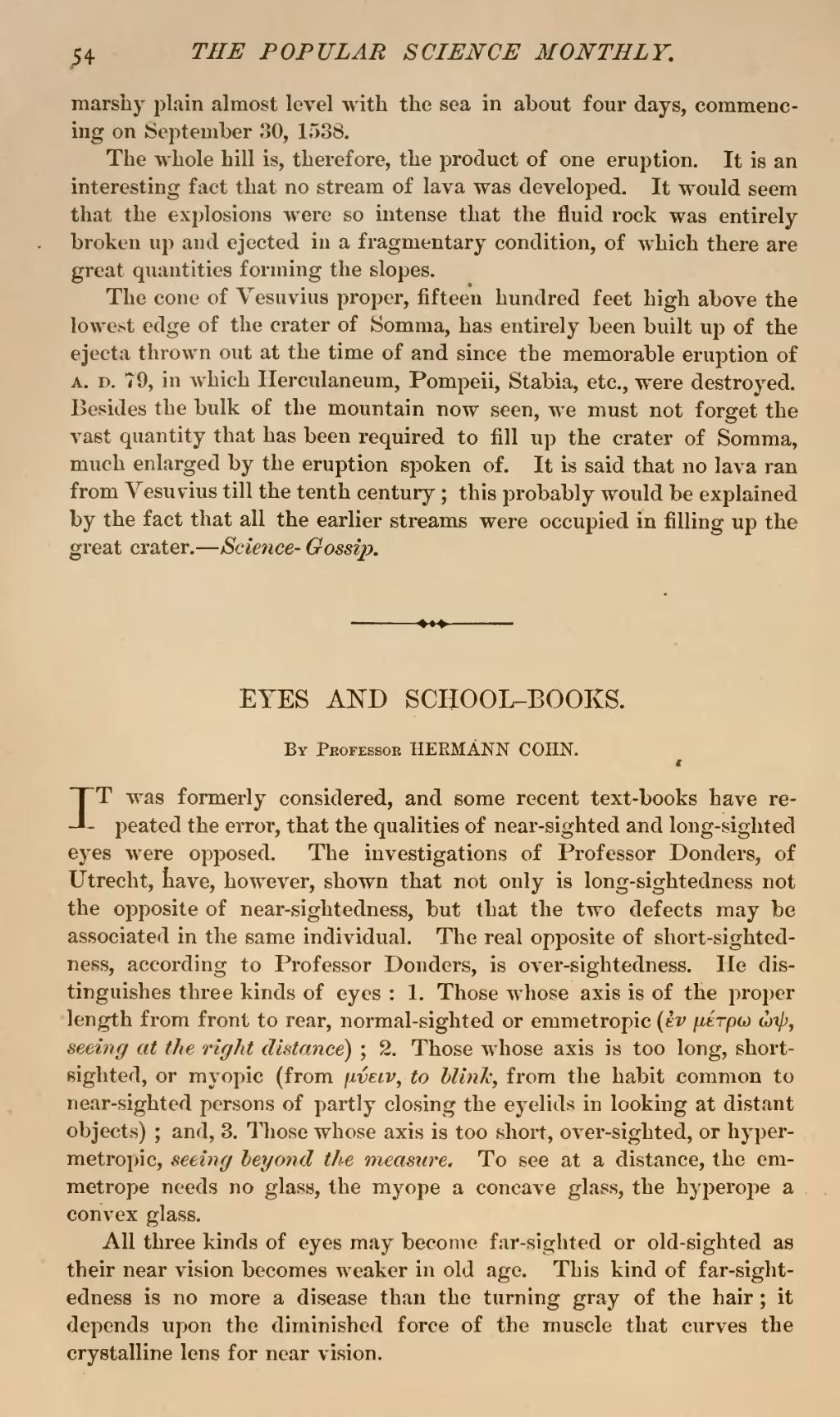marshy plain almost level with the sea in about four days, commencing on September 30, 1538.
The whole hill is, therefore, the product of one eruption. It is an interesting fact that no stream of lava was developed. It would seem that the explosions were so intense that the fluid rock was entirely broken up and ejected in a fragmentary condition, of which there are great quantities forming the slopes.
The cone of Vesuvius proper, fifteen hundred feet high above the lowest edge of the crater of Somma, has entirely been built up of the ejecta thrown out at the time of and since the memorable eruption of a. d. 79, in which Herculaneum, Pompeii, Stabia, etc., were destroyed. Besides the bulk of the mountain now seen, we must not forget the vast quantity that has been required to fill up the crater of Somma, much enlarged by the eruption spoken of. It is said that no lava ran from Vesuvius till the tenth century; this probably would be explained by the fact that all the earlier streams were occupied in filling up the great crater.—Science-Gossip.
| EYES AND SCHOOL-BOOKS. |
By Professor HERMANN COHN.
IT was formerly considered, and some recent text-books have repeated the error, that the qualities of near-sighted and long-sighted eyes were opposed. The investigations of Professor Donders, of Utrecht, have, however, shown that not only is long-sightedness not the opposite of near-sightedness, but that the two defects may be associated in the same individual. The real opposite of short-sightedness, according to Professor Donders, is over-sightedness. He distinguishes three kinds of eyes: 1. Those whose axis is of the proper length from front to rear, normal-sighted or emmetropic (ὲν μέτρω ὼψ, seeing at the right distance); 2. Those whose axis is too long, short-sighted, or myopic (from μύειν, to blink, from the habit common to near-sighted persons of partly closing the eyelids in looking at distant objects); and, 3. Those whose axis is too short, over-sighted, or hypermetropic, seeing beyond the measure. To see at a distance, the emmetrope needs no glass, the myope a concave glass, the hyperope a convex glass.
All three kinds of eyes may become far-sighted or old-sighted as their near vision becomes weaker in old age. This kind of far-sightedness is no more a disease than the turning gray of the hair; it depends upon the diminished force of the muscle that curves the crystalline lens for near vision.

